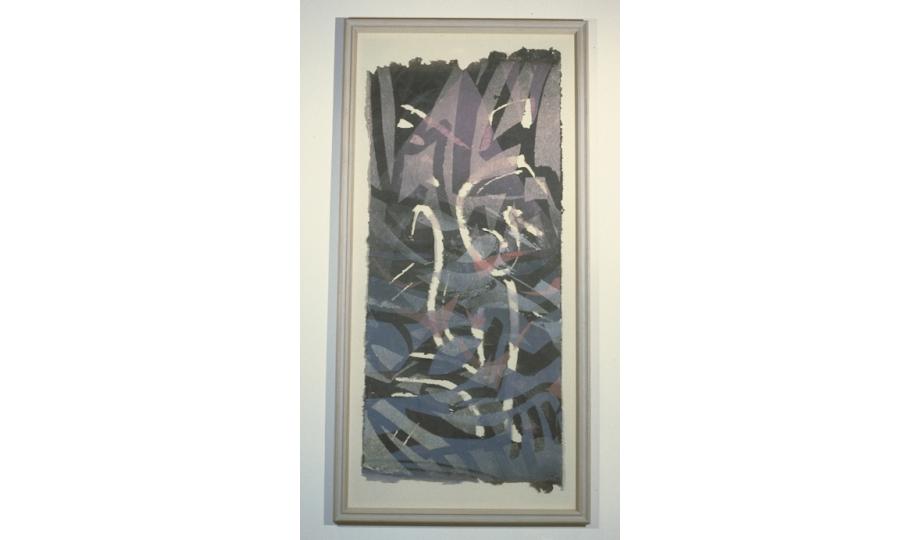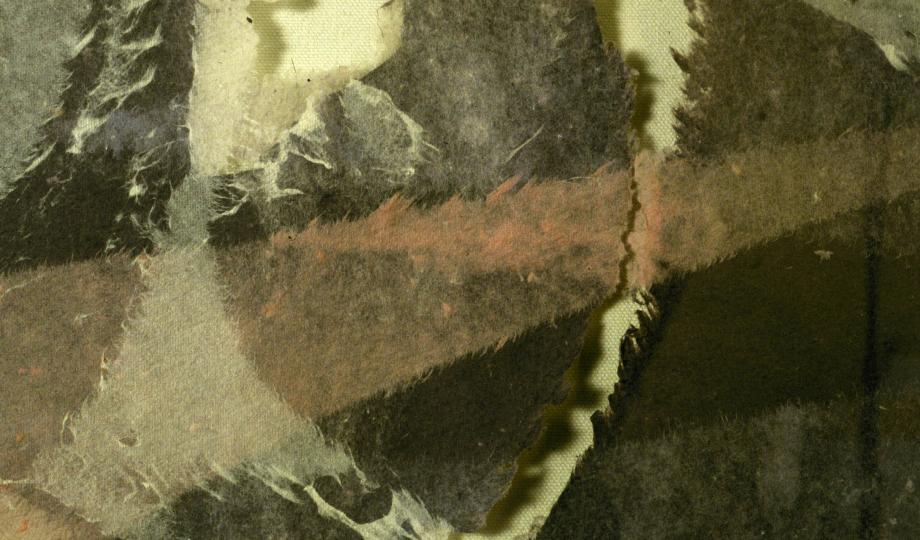Andrew James Smith
1984
Veil: Form Following Desire is one of a dozen pulp paintings made for an exhibition at the University of Waterloo arts centre in the foyer to the theatre. They were free hanging, as people walked by they waved in the wind.
Excerpt from 1994 Interview with the artist:
The holes in them are there for a slightly, irreverent reason, something written about it- (not published), the fact that you can peak through the holes. The holes were made with brush strokes- negative brush strokes.
The thing about paper art is that any way you suspect you can do something- you can in fact do it- just be sensitive to the phenomenon. If the consistency of the pulp is just right, you can get it to do anything. I'm working with it in a very fluid state. I get very subtle gradations by carefully maintaining the relationship of the pulp to the water... the fineness of the screen, the fineness of the pulp- (these are) important considerations.
The colour is from clothing- tiger brand tee-shirt colours, no demands on the colour to fit any specific hue. (I'm) just dealing with primary colours- red, blue, yellow, black and white... The pulp is basically a support for the colour. The relevance of using clothing is important. Already dyed cloth, worn clothing, clothing to be worn or could be worn, ground up, removing from the state of being able to cover, liberating to be able to re-establish it as something else.
(There is a) directional motion to the shapes- gesture. Traditional painting has a subject and a background... not a strong relationship, often interchangeable. A strong way to establish relationship is to establish a question in the background that is answered by the foreground. The hand gestures are in many cases like sign languages... a language of curves and straight lines that has an alphabet basis to it.
Currently on display at Cambridge Public Library, Queen's Square - first floor, study area


